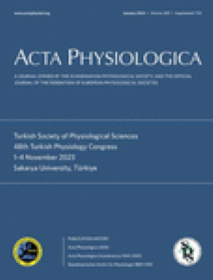Hemodynamics and Drinking in the Giraffe
Abstract
Background
The circulation of 4–6 m tall giraffes is markedly affected by gravity. To ensure cerebral perfusion, upright giraffes generate a blood pressure in excess of 200 mmHg. Before drinking, the head is lowered by 3–5 m, providing exceptional hemodynamic challenges. Here, we provide quantitative hemodynamic measures during head movement and drinking.
Methods
We measured carotid pressure, jugular pressure, heart rate, and blood flow in awake giraffes, along with circulating blood volume and cerebrospinal fluid pressure in anesthetized giraffes. We also analyzed the contractility and innervation of isolated cerebral and extracranial arteries, and the mechanical properties of jugular veins.
Results
When heads were lowered for drinking (i) blood pressure at heart level decreased but increased again during drinking, (ii) jugular pressure increased and oscillated during drinking, (iii) heart rate fell, (iv) carotid blood flow was unchanged, while cephalic hemodynamic resistance increased, and (vi) cranial cerebrospinal fluid pressure increased. Small cerebral arteries exhibited strong myogenic responses, particularly at around 100 mmHg, while extracranial arteries responded at higher pressures (200–250 mmHg). The giraffe's blood volume was small and blood pressure sensitive to minor reductions in blood volume.
Conclusions
Central blood pressure decreased when the head was lowered, but drinking per se caused a surprising rise in blood pressure to pre-drinking levels. This rise in blood pressure is likely due to the transfer of esophageal water boli acting on the jugular veins. The cephalic capillaries are protected by a strong myogenic response and sympathetic innervation.


 求助内容:
求助内容: 应助结果提醒方式:
应助结果提醒方式:


